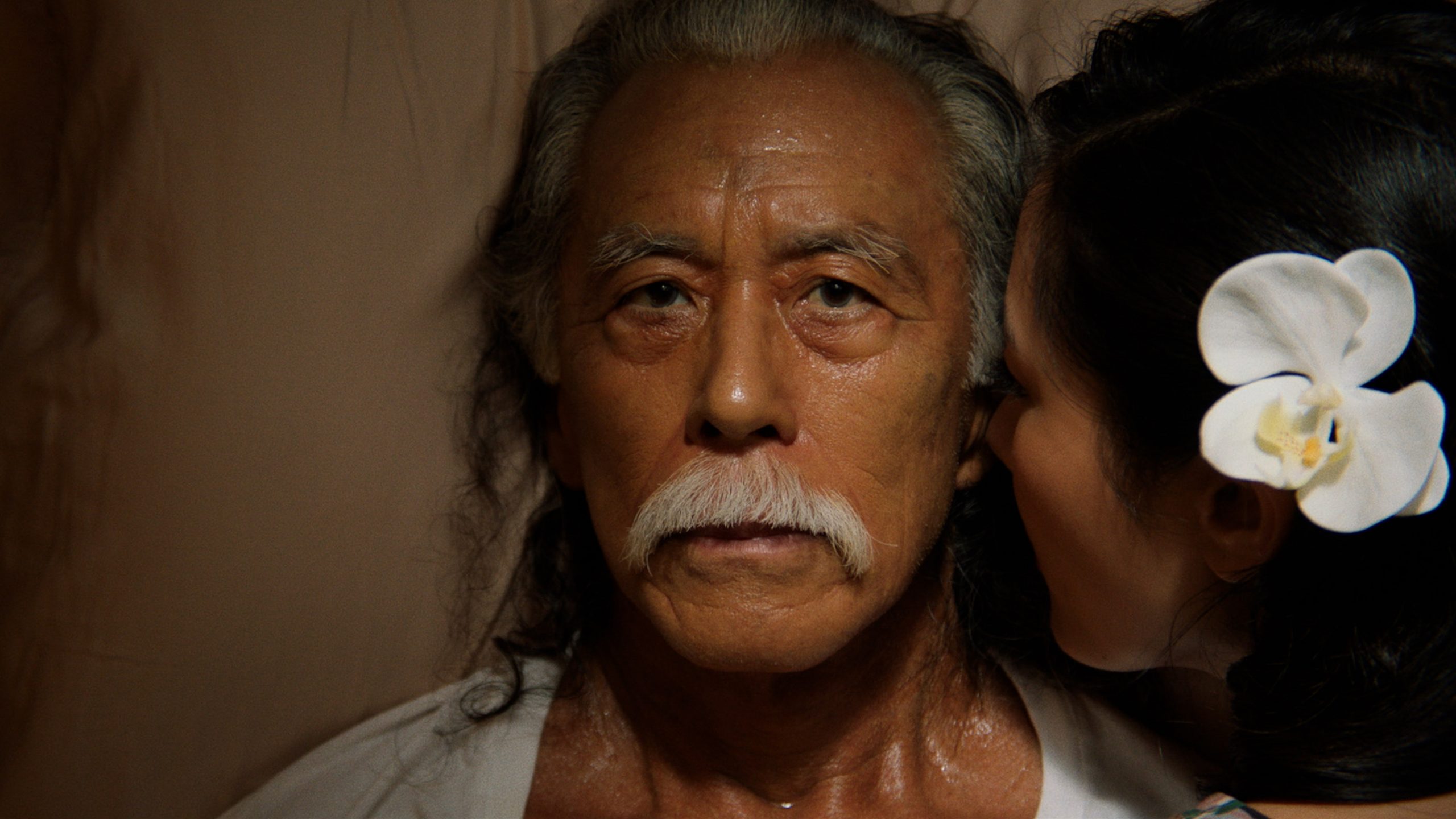 Back to selection
Back to selection
“I Wanted to Romanticize a Bit and Be Nostalgic”: DP Eunsoo Cho on I Was a Simple Man
 I Was a Simple Man
I Was a Simple Man Set in the countryside of O’Ahu, Hawai’i, Director Christopher Makoto Yogi’s second feature film I Was a Simple Man is a surreal portrait of an elderly man’s final days. Told in chapters, the film follows Masao (Steve Iwamoto) as he’s visited by ghosts of his past, including his wife Grace (Constance Wu). DP Eunsoo Cho clues us in on how to capture the majesty of Hawai’i’s landscape, as well as how to portray a movie that eschews time and space.
Filmmaker: How and why did you wind up being the cinematographer of your film? What were the factors and attributes that led to your being hired for this job?
Cho: I clicked the heels of my shoes three times and was magically in Hawai’i.
Filmmaker: What were your artistic goals on this film, and how did you realize them? How did you want your cinematography to enhance the film’s storytelling and treatment of its characters?
Cho: The story looks back the time past and transcends the world we live in. I wanted to romanticize a bit and be nostalgic, wanted the images to be unique to the audiences who are used to the modern precision.
Filmmaker: Were there any specific influences on your cinematography, whether they be other films, or visual art, of photography, or something else?
Cho: The films of Apichatpong Weerasethakul, Mr. Turner, Marie Laurencin, James Whistler.
Filmmaker: What were the biggest challenges posed by production to those goals?
Cho: Financial challenges and schedule pressure.
Filmmaker: What camera did you shoot on? Why did you choose the camera that you did? What lenses did you use?
Cho: The image of Hawai’i in my mind is lush, colorful and soft. The greens are vibrant, the rocks and earth are dark, and the clouds and breeze are very playful and soft. The story of the film travels through the space and time. I wanted a unique look for the story and the character of the island. I also knew that we would be shooting all locations and I would squeeze the camera into nooks and crannies. I needed a small body that is reliable and carries out the characteristics of the lenses.
Filmmaker: Describe your approach to lighting.
Cho: Be natural.
Filmmaker: What was the most difficult scene to realize and why? And how did you do it?
Cho: Creating a night in Masao’s bedroom. We shot day for night and the roofing outside comes down to the eye and the windows have small opening with obscure louvers. We made a basic rule for the contrast and the quality of the light but constantly moved around and improvised.
Filmmaker: Finally, describe the finishing of the film. How much of your look was “baked in” versus realized in the DI?
Cho: Thanks to COVID-19 we had to remotely communicate between the director, colorist and myself. Due to the different time zones the communication was not efficient. But the basic concepts are all there since we didn’t have any drastic changes.
TECH BOX
Film Title: I Was a Simple Man
Camera: ALEXA Mini
Lenses: Speed Panchro (TLS Version)
Lighting: Keoki Smith
